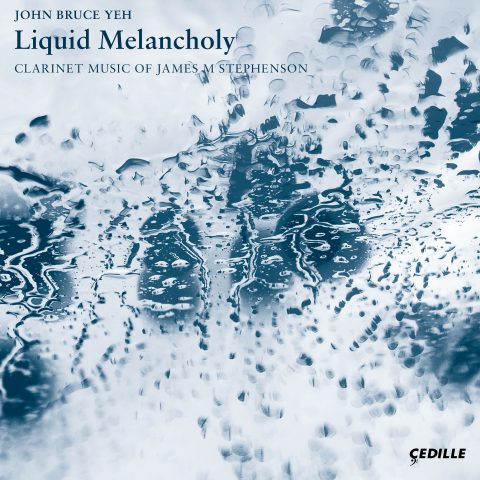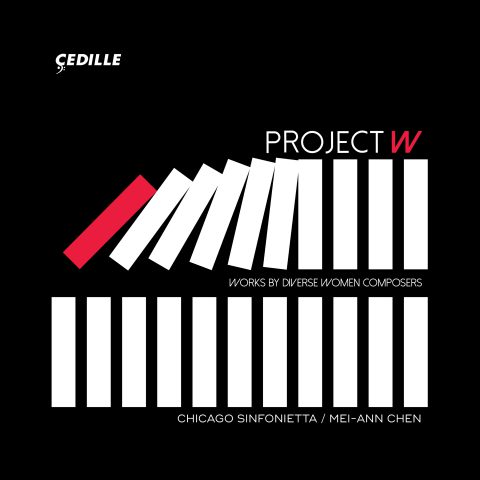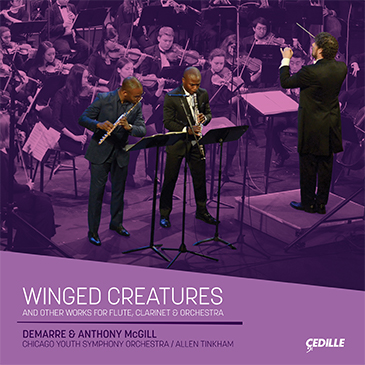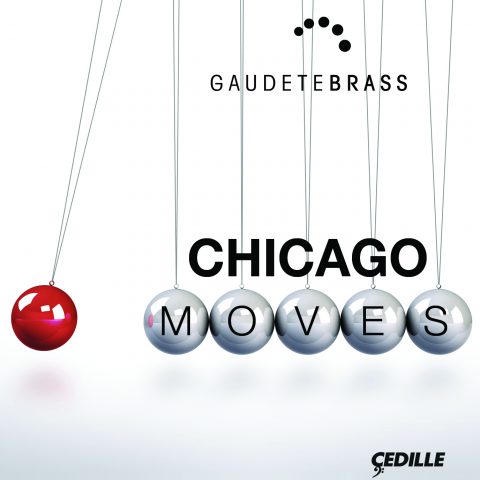Store
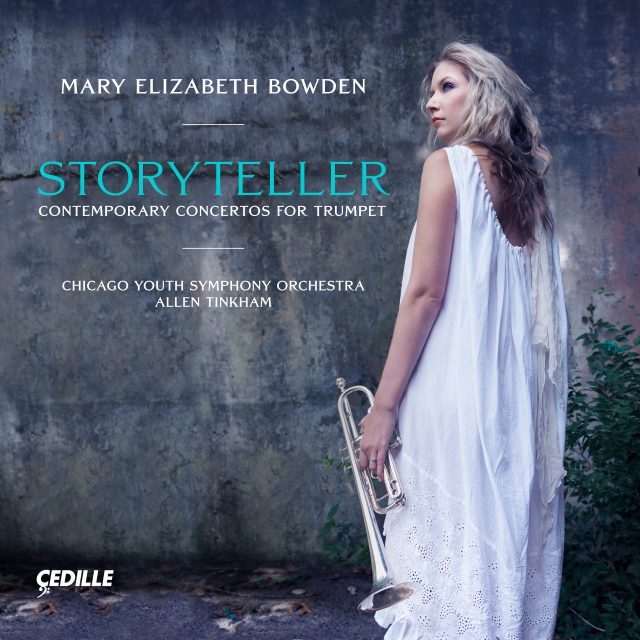
Store
Storyteller: Contemporary Concertos for Trumpet
Mary Elizabeth Bowden, Chicago Youth Symphony Orchestra, Allen Tinkham
James M. Stephenson, Clarice Assad, Vivian Fung, Reena Esmail
Mary Elizabeth Bowden, praised for her “splendid, brilliant” artistry (Gramophone), celebrates the narrative power of the trumpet with Storyteller: Contemporary Concertos for Trumpet. Bowden is joined by the Chicago Youth Symphony Orchestra and conductor Allen Tinkham in a collection of new concertos that redefine the trumpet’s voice in modern classical music.
This recording, a testament to Bowden’s commitment to expanding the trumpet repertoire, features world premiere recordings of works by James M. Stephenson, Clarice V. Assad, Vivian Fung, Tyson Gholston Davis, Sarah Kirkland Snider, and Reena Esmail, showcasing the richness and versatility of contemporary classical trumpet music.
Two works by James M. Stephenson bookend the program: The Storyteller, which pays homage to legendary trumpeter, Adolph Herseth, and Scram!, a spirited display of musical virtuosity.
Clarice Assad’s Bohemian Queen draws its inspiration from the life and visual art of Gertrude Abercrombie, known as “the queen of the bohemian artists” and active in Chicago’s jazz circles. Assad’s concerto integrates the classical form with the spontaneity of jazz.
Vivian Fung’s Trumpet Concerto is written for and inspired by Bowden’s pioneering journey as a female trumpeter in a male-dominated field. This continuous, episodic work traverses a spectrum of emotions — from struggle to triumph — culminating in a celebratory frenzy that challenges and expands the instruments’ traditional boundaries.
Tyson Davis’s Veiled Light is a musical interpretation of a James Abbott McNeill Whistler painting, Nocturne in Black and Red, conveyed through an exploration of light and shadow. The piece captures the artwork’s serene yet dynamic reflection of urban nightscapes.
Sarah Kirkland Snider originally scored her Caritas as a song for mezzo-soprano, based on texts by Hildegard von Bingen. The piece, which Snider arranged for trumpet specially for this recording, celebrates the power of the Female Divine and Bowden’s own presence in the brass music world as a symbol of strength, power, and creative force.
Reena Esmail’s Rosa de Sal, inspired by Pablo Neruda’s Sonnet XVII, is based on the Hindustani raag of Puriya Dhanashree. The composition delves into the depths of desire and intimacy, capturing the poem’s essence through a fusion of Western and Eastern musical traditions.
Storyteller: Contemporary Concertos for Trumpet is produced and engineered by the Grammy-winning team of James Ginsburg and Bill Maylone. It was recorded November 15, 2021 at Kennedy King College, Chicago, IL; December 9–10, 2023 at Sasha and Eugene Jarvis Opera Hall, DePaul University; and January 14–15, 2024 at Gannon Concert Hall, DePaul University.
Click here for a playlist inspired by this recording.
Listen to Jim Ginsburg’s interview with Mary Elizabeth Bowden on Cedille’s Classical Chicago Podcast!
Preview Excerpts
JAMES M. STEPHENSON
CLARICE V. ASSAD
Bohemian Queen: Concerto for Trumpet and String Orchestra
VIVIAN FUNG
TYSON GHOLSTON DAVIS
Veiled Light for Two Trumpets and String Ensemble
SARAH KIRKLAND SNIDER
REENA ESMAIL
STEPHENSON
Artists
1: Mary Elizabeth Bowden, CYSO, Allen Tinkham, Yvonne Lam, David Dash
2: Mary Elizabeth Bowden, CYSO, Allen Tinkham
3: Mary Elizabeth Bowden, CYSO, Allen Tinkham
4: Mary Elizabeth Bowden, CYSO, Allen Tinkham
5: Mary Elizabeth Bowden, CYSO, Allen Tinkham
6: Mary Elizabeth Bowden, CYSO, Allen Tinkham, David Dash
7: Mary Elizabeth Bowden, CYSO, Allen Tinkham, David Dash
8: Mary Elizabeth Bowden, CYSO, Allen Tinkham
9: Mary Elizabeth Bowden, CYSO, Allen Tinkham
10: Mary Elizabeth Bowden, CYSO, Allen Tinkham
Program Notes
Download Album BookletThe Storyteller
Notes by James M. Stephenson
I first heard Adolph “Bud” Herseth (1921–2013) live when I was 9 or 10. My parents bought box seats (with chairs that swiveled!) for a concert at Orchestra Hall, Chicago. I’m almost positive that the CSO was playing Pictures at an Exhibition, but it might have been Pines, or something else with a huge trumpet part. I’d love to tell you — in Hollywood fashion — that I looked up at my parents at concert’s end, with tears in my eyes, and exclaimed “That’s my instrument! I need a trumpet now!” That wouldn’t be entirely true, but obviously the concert left an indelible impression, because trumpet did become my instrument shortly thereafter.
I do remember distinctly, perhaps when I was 12, one day, when I was practicing out of the famed Arban’s book, getting really bored and looking for something else to practice, I thought to myself: “well, if I’m to be principal trumpet of the Chicago Symphony some day, I better learn how HE does it.” So I put the Arban book down and found all of the recordings of Pictures that we had in the house (I think we had three: perhaps a Reiner, a Solti, and a relatively obscure one in my mind at the time (Kubelik?) where Bud accented the notes more than other versions — anyway, I digress). The point is: that is the moment I consciously decided that he would be my role model. A few years later, while at the Interlochen Arts Academy, I began digesting every recording I could get my hands on: the rich Bruckner recordings with Barenboim, the Reiner Concerto for Orchestra (I still can’t hear that excerpt without expecting a slightly missed B near the end of the solo), the Mahler 5s, the Kije where he apparently ran up the stairs for the offstage solo just before the red light went on, etc…
But it was one piece in particular — and probably not one you’d expect — that brought me literally to tears nearly everytime I played it — over and over — in my dorm room up at Interlochen. That was Stravinsky’s Song of the Nightingale with Reiner. If you don’t know it, go get it. The lyrical solo (it happens twice) is some of the most beautiful playing you will ever hear. I was all of about 15 years old, and I was erasing all of my rock ‘n roll tapes (yes, tapes!) to record everything of Bud’s I could get my hands on. Ah, the power of music.
Later, in 1993, I had the fortunate opportunity to play a round of golf with Bud. He came down to my favorite course (an hour away) and we played. Of course, his trumpet advice to me was to practice. We were there to play golf, and I didn’t want to force him to talk trumpet too much. At the end of the round, he offered to give me a trumpet lesson. I never took him up on it; I was having chop issues (probably the beginning of my path to becoming a composer) and didn’t want to waste his time. Truth be told, I think he had already given me all the lessons I would ever need in all of those recordings, when he made me cry, telling his stories through his trumpet.
Bud Herseth died on April 13, 2013. I don’t play trumpet anymore, but I had a chance to do something for Bud, to compose a piece in his memory. I was already commissioned to write a new work for that year’s International Trumpet Guild conference, but I hadn’t started yet, when the news of Bud’s passing came. Through many phone calls, texts, emails, etc., Rich Stoelzel and I finally arrived at a point where we could announce that Chris Martin — the then-current principal trumpet of the Chicago Symphony — would premiere a new work dedicated to Bud, and would open Barbara Butler’s recital with it in its first iteration for solo trumpet, piano, violin, and offstage trumpet. (Barb was one of Chris’s teachers when he went to Eastman.) Chris was fantastic. Everyone was fantastic and so giving. Chris immediately was on board with this, agreeing to drive over to Grand Rapids right after a CSO concert to present the piece, and to drive home immediately afterward to play yet another CSO concert.
Furthermore, we decided to turn the piece into a fundraiser in Bud’s name, where all monies raised would go toward a scholarship in Bud’s name with the Chicago Civic Orchestra, a favorite teaching outlet of his. Nearly $2500 was raised, all from trumpet players and other musicians who had been touched by Bud.
The Storyteller comes from an article written about Bud — an article I recall reading while a teenager. It described how Bud didn’t just play the trumpet, he told a story with every note he played. I endeavored, through the course of this piece, to tell Bud’s story as best I could. There are subtle references to many of the famous orchestral trumpet excerpts that I listened to him play the most. Of course, the aforementioned tear-jerker is saved for the end, with a solo offstage trumpet hearkening — as if Bud himself — one last time.
I especially wish to thank Rich and Val Stoelzel along with GVSU, Chris Martin, Barbara Butler, my wife Sally (for inspiring the solo violin part), and all else who played a pivotal role in making this piece a possibility, all in an effort to pay tribute to perhaps the best orchestral trumpet player the world has ever known.
The chamber orchestra version of The Storyteller was commissioned by Grand Valley State University for trumpeter Richard Stoelzel.
Bohemian Queen
Notes by Clarice Assad
I wrote my Bohemian Queen concerto for trumpeter Mary Elizabeth Bowden and string orchestra — the Chicago Youth Symphony Orchestra. The piece’s subject is the surrealist art of Gertrude Abercrombie (1909–1977), an American painter based in Chicago who was called “the queen of the bohemian artists.” She was profoundly in the jazz scene and friends with noted musicians including Dizzy Gillespie, Charlie Parker, and Sarah Vaughan — and used to throw some amazing parties for them.
The piece is in three movements. The first two are inspired by her paintings: I. Girl Searching (1945) and II. The Stroll (1943). III. Hyde Park Jam is an imaginary depiction of her memorable parties where she used to sit in as a pianist and play with jazz’s greatest masters.
Abercrombie’s paintings are characterized by their use of dreamlike symbolism and careful attention to detail. Her work often featured animals and plants in surreal, otherworldly settings. In addition to being a painter, Abercrombie was also a poet and an active member of the Chicago jazz scene — a bold move for a white woman at a time when racial tensions were so high in the United States.
Trumpet Concerto
Notes by Vivian Fung
A virtuosic, tour de force work displaying the capabilities of the E trumpet and flugelhorn, my Trumpet Concerto (2019) aims to stretch the imagination as to what is possible for these instruments. Written for trumpeter Mary Elizabeth Bowden, the concerto was originally inspired by a conversation concerning Mary’s journey in her solo career, and especially as a woman in a male-dominated field. Ideas of striving, overcoming challenges, frustration, passion, and ultimately joy and celebration are all explored in the piece. Rather than composing the work in movements, I have chosen to organize the piece as a continuous work with various episodes, including a toe-tapping march, a lamentful and stormy chant, and a more contemplative section for flugelhorn leading to a hip-hop inspired dance. The materials ultimately culminate in a chaotic frenzy that recaps many of the materials and builds to a triumphant ending on the E trumpet. For more information: vivianfung.ca/music/trumpet-concerto
Commissioned for trumpet soloist Mary Elizabeth Bowden by the Erie Philharmonic (lead commissioner) and Anchorage Symphony Orchestra’s Musica Nova Commissioning Club, Chicago Youth Symphony Orchestras, Philharmonia Northwest, San Diego State University, San José Chamber Orchestra, Santa Fe Symphony, Shenandoah Conservatory, and Waynesboro Symphony.
Veiled Light
Notes by Tyson Davis
Commissioned by Mary Elizabeth Bowden and David Dash, I wrote Veiled Light (2021) in response to a painting by American artist James Abbott McNeill Whistler titled Nocturne in Black and Red (ca. 1884). The murky and ambiguous atmosphere of McNeill’s “Tonalist” period evoked several musical responses. I was intrigued by how the reflection of the buildings is eerily cast onto the canal as though the river isn’t moving. In the first movement, I was interested in capturing this phenomenon. The movement is very slow, with gradually changing harmonies and a descending line in the trumpets propelling the movement. The second movement has a rapid, thunderous texture, with the trumpets and strings playing “Cat and Mouse” with their ideas and timbres. I was also interested in achieving antiphonal textures by directing the trumpets to stand on opposite sides on the stage from one another, as well as stitching their lines together by having them complete each other’s ideas or birth new ideas from the ends of each other’s statements.
Caritas
Notes by Sarah Kirkland Snider
Caritas began life as a song for mezzo-soprano, string quartet, and harp, commissioned by Deutsche Gramophon for mezzo Emily D’Angelo’s debut album, enargeia. Emily knew I was writing an opera about 12th century composer/visionary/polymath Hildegard von Bingen, and asked me to write a piece inspired by her texts. I created a poem of sorts based on various Hildegard texts about the Biblical virtue “Caritas,” or Charity, to whom she often prayed. For Hildegard, Caritas embodied the Female Divine; along with Sapientiae (or Wisdom), she was God’s partner in creating the Universe. In this song, Caritas sings in the first person about being the life force behind the sun, moon, stars, and sea; the greenness in nature; and the vibrance in all living things.
It is fitting to me that Mary commissioned this arrangement for flugelhorn, strings, and harp, as I perceive Mary to be a kind of female deity of the brass world — strong, powerful, and a creative force to be reckoned with.
Caritas
by Sarah Kirkland Snider, after Hildegard von Bingen
I kindle every spark
I breathe out nothing that can die
And by means of the aerial wind
I stir all things to life
I flame above the fields
I burn in sun, moon, and stars
And when the waters
Shine and flow and breathe
Like living things, it is I
For I am love
The fire of life,
I am love
I am fire, I am love
For love is life entire
Not hewn from stone,
Not sown by seed
Not rooted in man’s want
Or virile strength,
Not conjured with his power
My root is reason,
In which language
sounds and flowers
I flame above the fields
To signify Earth
I shine within the sea
To indicate the soul
I burn in sun and moon
To signal reason
And the stars
Are the innumerable stars
Are the innumerable
Words of reason
Rose del Sal
Notes by Reena Esmail
Rosa de Sal takes its title from Pablo Neruda’s Sonnet XVII. The piece’s first iteration was as a song for soprano and piano.
Neruda’s poetry is at once so direct and so subtle. How better to capture the beautiful, intimate sensation of loving another person? The dark, furtive
world of this poem led me to a setting based in the Hindustani raag, Puriya Dhanashree — which is also dark and longing and feels to me as though it reaches out past quotidian comforts into the vast complexity of desire. I could say more — but the text says it better than I ever could.
One Hundred Love Sonnets: XVII
by Pablo Neruda
translated By Mark Eisner
I don’t love you as if you were a rose of salt, topaz,
or arrow of carnations that propagate fire:
I love you as one loves certain obscure things,
secretly, between the shadow and the soul.
I love you as the plant that doesn’t bloom but carries
the light of those flowers, hidden, within itself,
and thanks to your love the tight aroma that arose
from the earth lives dimly in my body.
I love you without knowing how, or when, or from where,
I love you directly without problems or pride:
I love you like this because I don’t know any other
way to love,
except in this form in which I am not nor are you,
so close that your hand upon my chest is mine,
so close that your eyes close with my dreams.
Scram!
Notes by James M. Stephenson
I wrote Scram! as a fun encore for my friends at the U.S. “President’s Own” Marine Band. I have nothing but the highest regard for Amy McCabe, the solo part’s dedicatee, and Colonel Jason K. Fettig, who asked me to compose the piece.
I composed the piece for the band’s October 2018 tour of the Midwest (including a stop in my home city of Chicago). It was designed to “chase” Amy off the stage after having performed The Storyteller. Because the latter piece ends quietly, I imagined an encore to quickly show Amy’s virtuosic skills before she was to hasten back to the principal trumpet chair; hence the name “Scram!”
I created this orchestral transcription at the request and commission of Mary Elizabeth Bowden. I have known Mary for many years and have watched her career deservedly grow into the busy schedule she now commands as soloist, chamber musician, and teacher. In both cases — the original and transcribed versions — I am ever so thankful for the opportunity to create a vehicle for these two amazing trumpeters to show off their talents.
Album Details
PRODUCER
James Ginsburg
SESSION ENGINEERS
Bill Maylone, Eric Arunas
MIXING AND MASTERING
Bill Maylone
RECORDED
November 15, 2021 at Kennedy King College, Chicago, IL (Fung)
December 9–10, 2023 in Sasha and Eugene Jarvis Opera Hall, DePaul University (Esmail, Assad, Stephenson: Scram!)
January 14–15, 2024 in Mary Patricia Gannon Concert Hall, DePaul University (Davis, Stephenson: The Storyteller)
GRAPHIC DESIGN
Bark Design
COVER PHOTO
Lisa-Marie Mazzucco
PUBLISHERS
STEPHENSON The Storyteller © 2013 Stephenson Music
ASSAD Bohemian Queen © 2022 Virtual Artists Collective Publishing (ASCAP)
FUNG Trumpet Concerto © 2019 Vivian Fung Music ASCAP/SOCAN
DAVIS Veiled Light © 2021 Tyson Gholston Davis (BMI)
SNIDER Caritas © 2021 Music Sales Corporation, all rights administered by G. Schirmer, Inc.
ESMAIL Rosa de Sal © 2023 – A Piece of Sky Music (ASCAP)
STEPHENSON Scram! © 2018 Stephenson Music
CDR 90000 229
